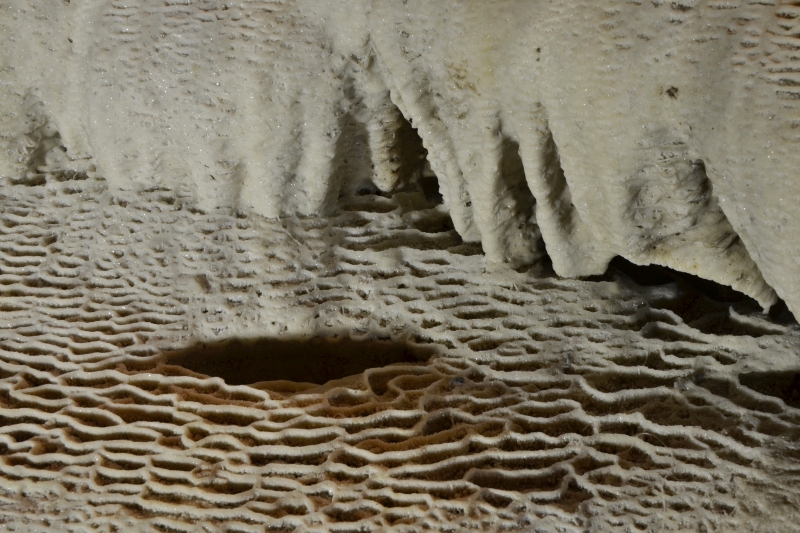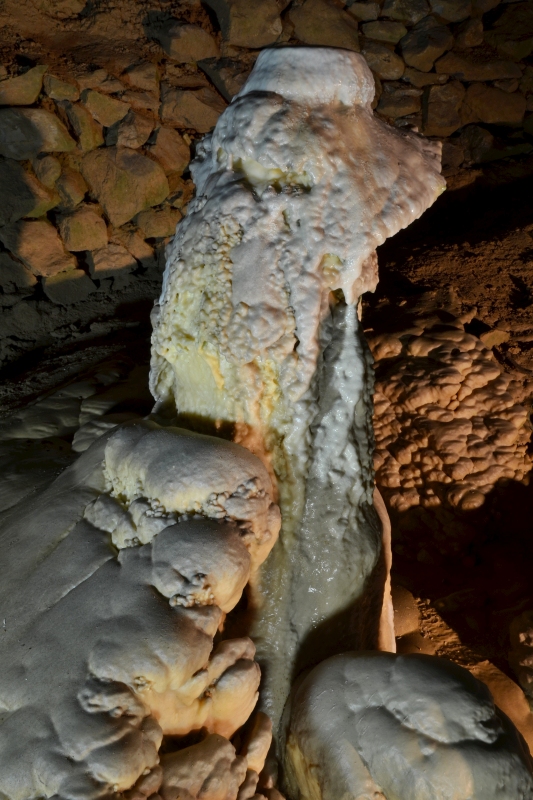Punkva (Punkevní) Caves - Natural Conditions

Geological development of the area
Moravian Karst is formed by limestone organic sea sediments from the period of the middle till upper devon, 350-380 million years old. They form the layers of Josefov, Lažánky, Vilémovice and Křtiny limestone according to the periods of their development. The total thickness of the limestone is estimated at 500-1000 metres. In the west the pieces of limestone cover the old deep eruptive rocks - grandiorites of Brno massif, in the east they’re covered with younger greywackes and carbon slates.
After the retreat of the Paleozoic sey and after huge folding which attacked the whole Czech massif the uncovered limestone mountain range started to subject to intensive karsting.
It was interrupted by short - time sea floods during the Mezozoic era and the Tertiary era. These floods reflected mountain - made unrest of the main phases of the huge Alpine folding in the surroundings. The Mezozoic sea left its carbon sediments with the fossils of ammonites, belemnites and other sea animals for example in the area of Olomučany.
Since the period of later Cretaceous various layers of kaolin sands and clays have been preserved. They fill deep karst depressions (so called geological organs) in the Area of Rudice. They are the remains of the continental sedimentation during the tropical climate.

Next development of the Moravian Karst was deeply influenced by the Tertiary Baden sea flood. Deep karst canyons with the oldest cave systems filled young clay sediments from the gult of Vienna basin, which caused basic changes in the hydrographic development of the whole area. Since the hlaf of the Tertiary era the Moravian Karst has had gradually the present outlook.
Stalactite decoration of the Punkva caves
The Punkva caves have rich and varied stalactite decoration although they were damaged to some extent mainly in the period of the first work which made the caves accessible.
The decoration condensed from saturated karst water soaking through the hanging wall limestone. Stalagmites, stalagnates, stalactites of carrot-stick shape, curtains and other formations are typical for the Punkva caves. The remarkable formation is so called „Overturned umbrella“ in the Front cathedral. Dead-burnt board rising on the stalagnate arose on the oblique layer of clay which was flown away later. The stalagnate called „Angel“ is combined with the big dead-burnt crusts and curtains and it is of the unique shape.
The Masaryk’s Cathedral has very rich stalactite decoration and also its continuation which isn’ t open to public - „Glass Cathedral“. The characteristic formations are thin sticks and also excentric stalactites professionally called helictites.
Photo: Kamila + Jiří Šírovi